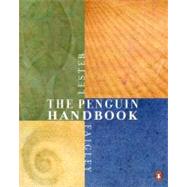
| Composing in The Digital Era | |
| Inroduction: Writing for Different Purposes in Different Media | |
| The Rhetorical Situation | |
| The Rhetorical Triangle | |
| A Writer's Audience | |
| A Writer's Ethos | |
| A Writer's Purpose | |
| Words and Images | |
| Verbal vs. Visual Media | |
| Where Visuals Work Best | |
| Where Words Work Best | |
| Planning and Drafting | |
| Establish Your Goals | |
| Explore Your Topic | |
| Write a Working Thesis | |
| Plan a Strategy | |
| Compose a Draft | |
| Write as a Member of a Team | |
| Stay Organized | |
| Composing Paragraphs | |
| Focus Your Paragraphs | |
| Organize Your Paragraphs | |
| Make Your Paragraphs Coherent | |
| Consider Paragraph Length | |
| Link Across Paragraphs | |
| Write Effective Beginning and Ending Paragraphs | |
| Rewriting, Editing, and Proofreading | |
| Switch from Writer to Reader | |
| Learn Strategies for Rewriting | |
| Respond to Other Writers' Drafts | |
| Edit for Particular Goals | |
| Proofread Carefully | |
| Learn to Edit the Writing of Others | |
| Writing in College and Beyond | |
| Critical Reading and Viewing | |
| Two Kinds of Reading and Viewing | |
| Critical Reading | |
| Verbal Fallacies | |
| Critical Viewing | |
| Visual Fallacies | |
| Writing to Reflect | |
| Find An Reflective Topic | |
| Identify a Focus | |
| Develop Your Response | |
| Sample Reflective Essay | |
| A Reflective Magazine Article | |
| A Reflective Web Site | |
| Writing to Inform | |
| Find an Informative Topic | |
| Narrow Your Topic and Write a Thesis | |
| Develop and Organize Your Ideas | |
| An Informative Brochure | |
| Business Letters, Emails, and Memos | |
| Reports | |
| Writing to Persuade | |
| Find an Arguable Topic | |
| Make an Arguable Claim | |
| Developand Organize Good Reasons | |
| Sample Proposal Argument | |
| A Persuasive Letter of Application and Résumé | |
| Visual Rhetoric | |
| Design Basics | |
| Create a Visual Relationship | |
| Make Similar Elements Look Similar | |
| Make Different Elements Look Different | |
| Understanding the Rhetoric of Type | |
| Creating Graphics, Tables, and Charts | |
| Types of Illustrations | |
| Illustrations | |
| Imaging Editors | |
| Formats and Printers | |
| Tables | |
| Charts and Graphs | |
| Verbal and Visual Presentations | |
| Planning a Presentation | |
| Delivering a Presentation | |
| Design Effective Visuals | |
| Writing for The Web | |
| Web Basics | |
| The Architecture of a Web Site | |
| Visual Design on the Web | |
| Establish Goals for a Web Site | |
| Steps in Creating a Web Site | |
| Get Started | |
| How HTML Tags Work | |
| Adding Links and Images | |
| Organize Your Web Site | |
| Building a Multi-Page Site | |
| Principles of Navigational Design | |
| Tools for Navigation | |
| Navigation on Complex Sites | |
| Make Your Site Accessible | |
| Test and Improve Your Site | |
| Researching | |
| Planning Your Research | |
| Analyze the Research Task | |
| Set a Schedule | |
| Find a Topic That Interests You | |
| Ask a Question and Draft a Working Thesis | |
| Decide What Kind of Research You Need to Do | |
| Plan Field Research | |
| Finding Sources | |
| Research in Libraries and on the Web | |
| Find Books | |
| Find Articles in Journals | |
| Find Newspaper Articles | |
| Find Information on the Web | |
| Start a Working Bibliography | |
| Evaluating Sources | |
| Determine the Relevance of Sources | |
| Determine the Reliability of Print Sources | |
| Determine the Reliability of Internet Sources | |
| Avoiding Plagiarism When Using Sources | |
| The Purpose of Documenting Sources | |
| Intellectual Property and Scholastic Honesty | |
| Avoid Plagiarism | |
| Quote Sources without Plagiarizing | |
| Summarize and Paraphrase Sources Without Plagiarizing | |
| Writing the Research Project | |
| Review Your Goals and Thesis | |
| Plan Your Organ | |
| Table of Contents provided by Publisher. All Rights Reserved. |
The New copy of this book will include any supplemental materials advertised. Please check the title of the book to determine if it should include any access cards, study guides, lab manuals, CDs, etc.
The Used, Rental and eBook copies of this book are not guaranteed to include any supplemental materials. Typically, only the book itself is included. This is true even if the title states it includes any access cards, study guides, lab manuals, CDs, etc.